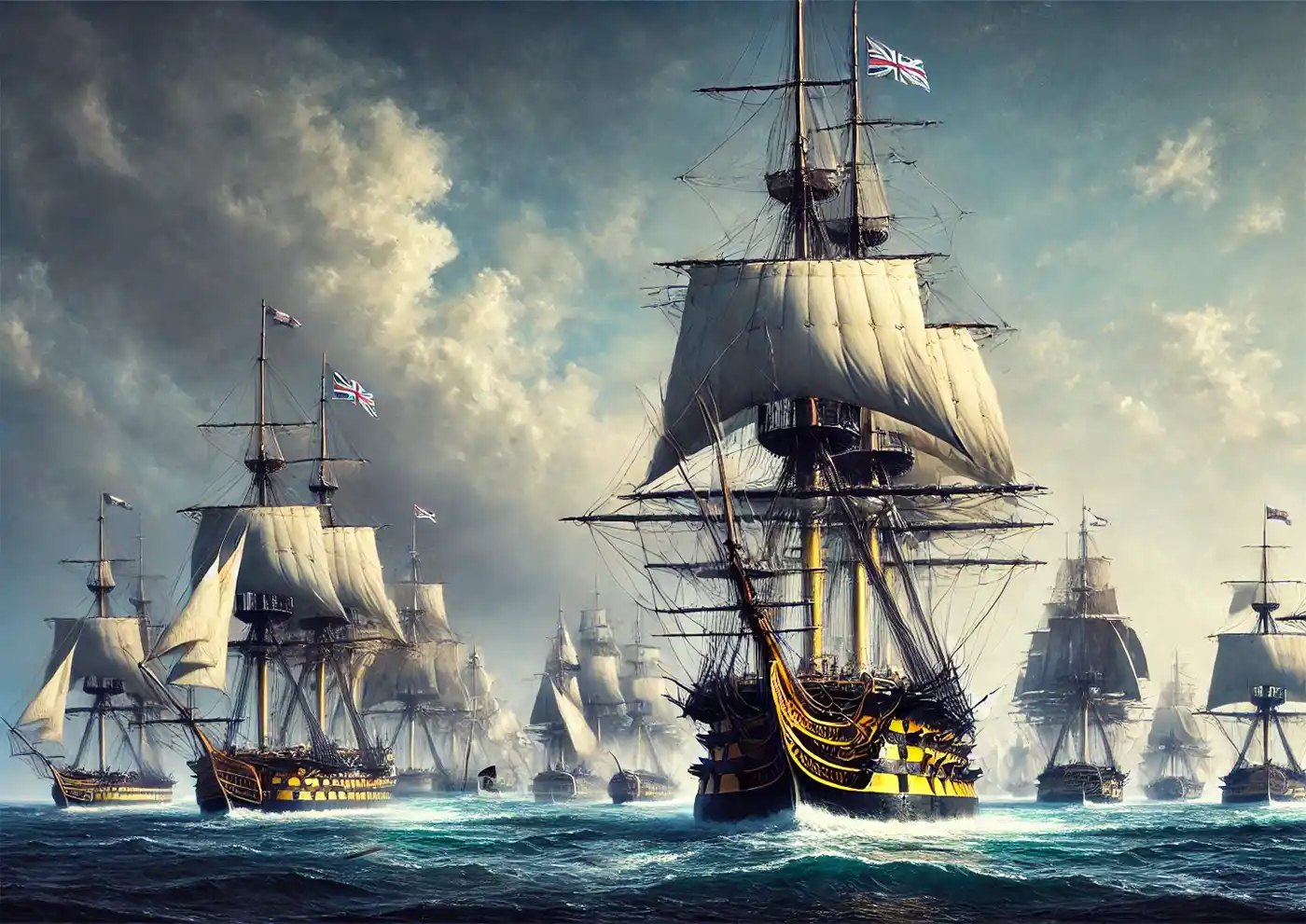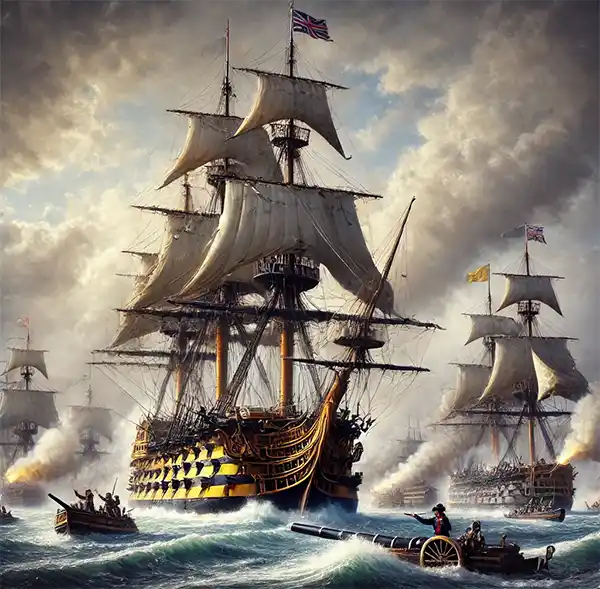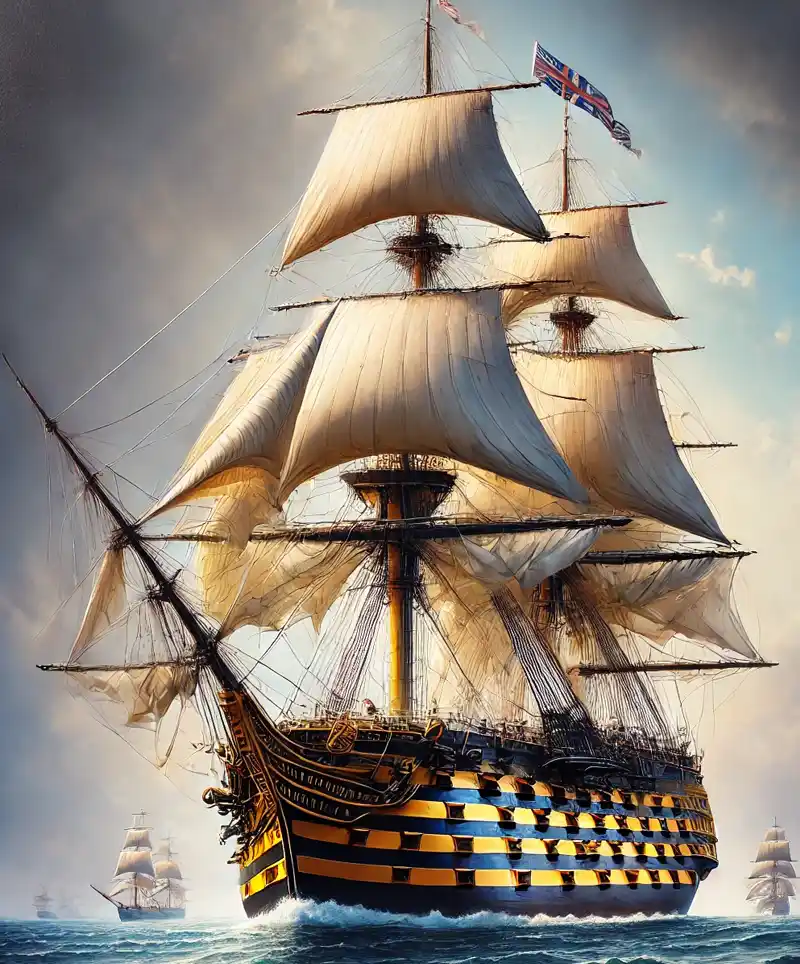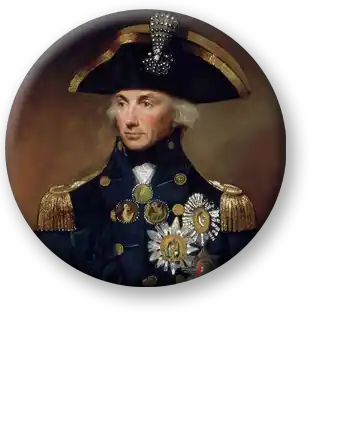Naval History's Turning Tide
Every year on October 21st, we hoist the sails of remembrance to celebrate Trafalgar Day, commemorating the British Royal Navy's decisive victory over the combined fleets of France and Spain in 1805. It's a day where history enthusiasts and naval aficionados alike gather to tip their tricorn hats to Admiral Lord Nelson, the man who proved that sometimes, size doesn't matter—as long as you have superior tactics and a catchy signal flag message.
Europe in Turmoil
The early 19th century was a bit of a rough patch for Europe. Napoleon Bonaparte was on a continental rampage, collecting countries like stamps in a very aggressive album. Britain, enjoying its island status and tea time, wasn't keen on joining Napoleon's collection. The French Emperor knew that to successfully invade Britain, he needed to control the seas. Enter the French and Spanish fleets, who teamed up like the original "Avengers" (but with more cannons and fewer superheroes).

Horatio Nelson was not your average naval commander. By the time of the Battle of Trafalgar, he'd lost an arm and the sight in one eye, which in today's terms would probably earn him a desk job and a decent parking spot. But Nelson was anything but desk-bound. Charismatic and unconventional, he was known for his bold tactics and the ability to inspire his men—perhaps because they figured if a guy with one arm and one eye wasn't afraid to charge into battle, they had no excuse.
Breaking the Line (and Expectations)
On October 21, 1805, off the coast of Cape Trafalgar, Spain, Nelson faced a fleet that outnumbered his own 33 ships with their 41. Conventional tactics of the time dictated lining up parallel to the enemy and exchanging broadsides until someone had the good sense to sink. Nelson, never one for following the crowd, decided to split his fleet into two columns and charge perpendicularly at the enemy line—a move that probably made traditionalists spill their grog.
As his ships advanced, Nelson sent the now-famous signal to his fleet: "England expects that every man will do his duty." Short, sweet, and to the point—much like Nelson himself.
The ensuing battle was nothing short of organized chaos. Ships collided, cannon fire thundered, and smoke filled the air thicker than London's famous fog. Amidst this, Nelson's tactics paid off. By breaking the enemy line, the British fleet could engage in close-quarters combat, where their superior training and gunnery made the difference.
However, the victory came at a great cost. Nelson was mortally wounded by a French sniper. As he lay below deck, he reportedly inquired about the battle's outcome. Upon hearing that victory was assured, he uttered the famous words, "Now I am satisfied. Thank God I have done my duty." Talk about commitment to the job.
Britannia Rules the Waves
The Battle of Trafalgar ended with a resounding British victory. The French and Spanish fleets lost 22 ships; the British lost none. More importantly, Napoleon's plans to invade Britain were thwarted, and the Royal Navy established dominance over the seas that would last for over a century. It was like winning the World Cup of naval warfare, only with more splinters and less champagne.
Today, Trafalgar Day is celebrated with parades, ceremonies, and the occasional reenactment (minus the actual cannon fire, thankfully). In the UK, the Royal Navy holds commemorative events, and Nelson's Column in London's Trafalgar Square becomes the focal point for patriotic pride. It's a day to reflect on naval heritage, leadership, and the strategic genius of a man who probably found eyepatches redundant.
 Fun Facts to Impress Your Friends (or Bore Them at Parties)
Fun Facts to Impress Your Friends (or Bore Them at Parties)
-
Nelson's Pickle: After his death, Nelson's body was preserved in a cask of brandy (or rum, depending on the account) for the journey back to England. This led to the term "Nelson's Pickle," though we're pretty sure no one was keen on sampling that particular brew afterward.
-
A Monumental Mistake: The first version of Nelson's Column was built in Dublin, Ireland, in 1808, well before the one in London was completed in 1843. However, the Dublin monument was destroyed in 1966. So, London's isn't the original—just the tallest at 169 feet (and without an elevator).
-
Signal Flags and Misquotes: Nelson's famous signal is often misquoted as "England expects every man to do his duty." The actual message included "that"—small word, big difference. Signal flags were the emojis of the 19th century, conveying complex messages with a limited set of visuals. Imagine trying to send a text without vowels; it's a wonder they understood anything at all.
The Lighter Side of Naval Warfare
While war is no laughing matter, history does have its lighter moments:
-
Fashion Forward: Nelson was known for his flamboyant uniforms, adorned with medals that made him an easy target. It’s like he thought, "Why blend in when you can stand out?" Perhaps not the best strategy when snipers are around, but you can't fault the man for lacking style.
-
Sea Shanties and Morale: To keep spirits high, sailors often sang sea shanties. Think of them as the original Spotify playlists, but with more references to grog and less concern for key changes. Nothing boosts morale like a hearty chorus about a whale or a wayward lass.
-
Health and Hygiene: The average sailor's diet was...well, let’s just say Michelin stars were in short supply. Hardtack biscuits (affectionately known as "molar breakers") and salted meat were staples. Scurvy was a constant threat, only countered when someone had the bright idea to pack limes, giving birth to the nickname "Limeys" for British sailors.
The Battle of Trafalgar isn't just a page in a history book; it's a masterclass in leadership and innovation. Nelson's willingness to defy conventional tactics demonstrates the power of thinking outside the box—or in this case, outside the line of battle. His ability to inspire his crew, despite personal injuries and the overwhelming odds, serves as a timeless example of effective leadership.
How to Commemorate Trafalgar Day (Without Sailing into Battle)
-
Visit Maritime Museums: If you're near a maritime museum, Trafalgar Day is the perfect excuse to dive into naval history. Plus, you might get to see some cool old cannons and figureheads, and who doesn't love a good figurehead?
-
Read Up on Naval History: Curl up with a good book about the Napoleonic Wars. Patrick O'Brian's "Master and Commander" series is a fictional but richly detailed place to start—just be prepared to encounter more nautical terms than you ever thought existed.
-
Dress Like a Naval Hero: While walking around in a full naval uniform might earn you some strange looks, perhaps donning a tricorn hat for the day could be a fun (if slightly eccentric) way to pay tribute. Bonus points if you can work "yar" into casual conversation.
-
Enjoy Some Grog: Mix yourself a (responsible) rum-based drink in honor of the sailors who endured the high seas. Just remember, their grog was often watered down and spiked with citrus to prevent scurvy—not exactly a mojito, but it's the thought that counts.
Navigating the Seas of History
Trafalgar Day is more than a remembrance of a single battle; it's a celebration of innovation, courage, and the indomitable human spirit. It's a reminder that sometimes, the underdog can triumph against the odds with a bit of daring and a lot of determination. And perhaps it's a subtle nudge that maybe we should all pay more attention to history—if only to avoid the fashion faux pas of wearing all your medals into battle.
So, this October 21st, take a moment to appreciate the waves of history that have shaped our world. Who knows, you might even be inspired to chart a new course in your own life—preferably one that doesn't involve cannon fire.
HMS Victory, Admiral Nelson’s flagship at the Battle of Trafalgar, is one of the most iconic ships in naval history. Launched in 1765, this 104-gun first-rate ship of the line was pivotal in securing Britain’s dominance at sea, especially during the Battle of Trafalgar in 1805, where Nelson famously led his fleet to victory. Despite being over 250 years old, HMS Victory remains a commissioned vessel of His Majesty’s Royal Navy, serving as a living testament to Britain’s naval heritage.
Today, HMS Victory is preserved as a museum ship in Portsmouth, England, where visitors can walk her decks and imagine the intensity of the historic battle. She stands as both a memorial to Admiral Nelson and a symbol of Britain’s naval legacy. Still officially on the Royal Navy’s books, HMS Victory may no longer sail, but her role in history is anchored firmly in the nation's pride.
Please Share our Content







 Fun Facts to Impress Your Friends (or Bore Them at Parties)
Fun Facts to Impress Your Friends (or Bore Them at Parties)








 "Sláinte!" is a traditional Irish expression used as a toast, equivalent to "Cheers!" in English.
"Sláinte!" is a traditional Irish expression used as a toast, equivalent to "Cheers!" in English.